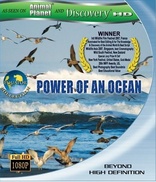
Power of an Ocean (Episode 1)
At the Equator, the power of the sun and the spin of the earth combine to set in motion great ocean currents which move across the Pacific Ocean shaping life on two very different islands.
On tiny Palmyra Atoll, in the central Pacific, thirty metre-high Pisonia trees thrive in the constant warmth and rain. Coconut crabs rule the forest floor: the world’s largest terrestrial invertebrates dine on coconut flesh and live at Palmyra without fear of predators.
The skies above the island belong to seabirds such as red-footed boobies that feed far out at sea and bring rich guano gifts that the trees depend on. The guano is washed through the porous coral sand to feed the diverse, colourful fringing reef, populated by fish and corals swept from the west by great ocean currents.
Ocean currents shape life on the Galapagos in very different ways. The western shores of the islands are bathed by the reliable Cromwell Current, and when this cold deep water hits the sun-lit surface blooms of plankton turn the sea into a nutritious soup. Metre-tall flightless cormorants breed ashore, but fish in the rich murky water. Marine iguanas lead a lifestyle that is possible only at the Equator: basking on hot volcanic rocks until they are warm enough to dive down and feed in lush underwater algae gardens.
For much of the year life in the eastern Galapagos Islands is uncertain; the islands are bathed by warm water that is poor in food, and blue-footed boobies gamble the lives of their chicks as they wait for cold water to arrive. In some years the cold water doesn’t arrive at all and animals starve, but when it does arrive all the creatures of the sea prosper. The booby chicks’ future is assured, and Galapagos penguins fly through enormous schools of fish, harvesting the bounty of cold water.
Equator – Power of an Ocean tells the story of island life shaped by the equatorial sun and the immense power of the Pacific Ocean.
 淘宝店铺:http://94hd.taobao.com
淘宝店铺:http://94hd.taobao.com